- Call us: 01444 237070
- Contact Us
- Stores
- Sign In / Register
-
- Back
- Used Cameras
- Used Lenses
- Used Video
- Used Film Equipment
- Used Stock Alert
- Used Accessories
- Recently Added Used Equipment
- Used Clearance
- Faulty
- Park Picks
- Sell or Part Exchange
- Trade-In
- Blog
- New in
- Call us
- Contact us
- Stores
- Sign in
- Categories
- Tips & Inspiration
- Reviews
- News
- Events
- Features
- Buying Guides
- Competitions
Panasonic Lumix GH7 Review
The flagship Panasonic Lumix GH7 is the next-generation micro four thirds mirrorless camera, continuing the video-first legacy upheld by the highly respected G Series. With previous Panasonic models becoming synonymous with YouTube video creators and professional client-based productions, the GH7 has a lot to live up to.
Panasonic Lumix GH7 Video Review | Everything We Wanted?
Our Panasonic Lumix GH7 Review explores whether it does just that, including our very own Gareth’s hands-on video, sample images to ogle, and a detailed dive into key features and specs. This ensures you’re fully equipped with everything you need to know about the latest portable MFT Lumix camera.
Let’s get started by exploring pricing, available lens kits, and the final release date of this highly anticipated micro four thirds body for video creators.
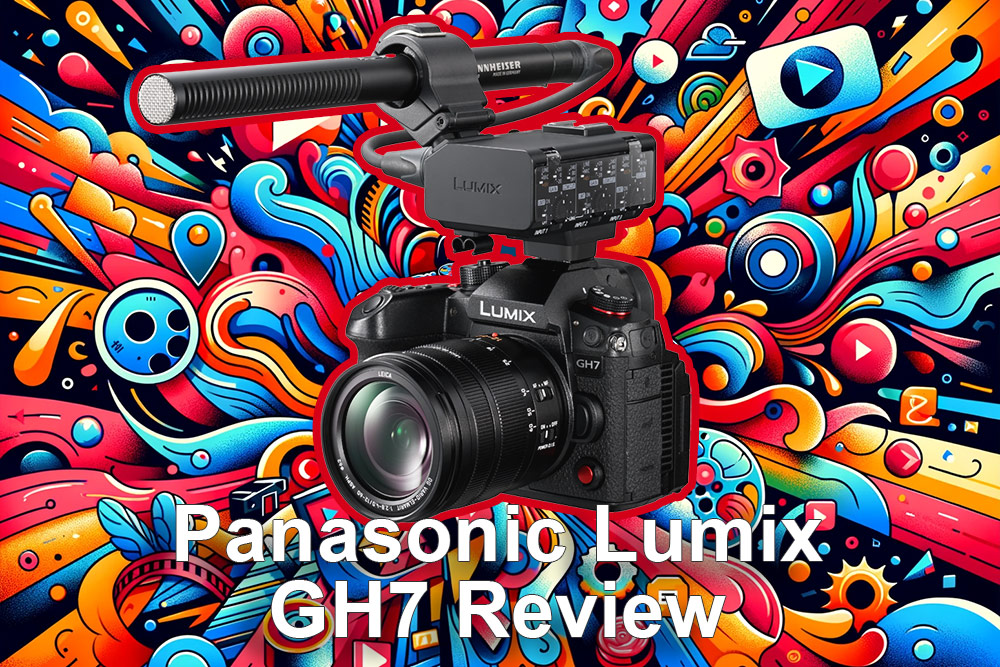
When did the Lumix GH7 come out?
The Panasonic Lumix GH7 was released on June 5, 2024, mere days after the full-frame Lumix S9 was released, and just two years since the previous generation GH6 launched in February 2022. This shows Panasonic’s commitment to the rapid development of both S and G series camera ranges.
How much does the Lumix GH7 cost?
The Panasonic Lumix GH7 camera costs £1999.00 for the body-only and £2499.00 for the GH7 Camera with Leica 12-60mm Lens Kit. The GH6 price is £1,399.00, demonstrating just how powerful the latest video-first GH7 camera is in comparison. So let’s find out what you get for the additional £600.00.

Lumix GH7 Key Features
The latest generation Panasonic GH7 is packed to the gills, sporting a new BSI sensor, new AF capabilities, and a host of new and upgraded video features. These include:
- A newly developed 25.2MP Backside Illuminated CMOS sensor
- 13+ stops dynamic range when shooting in V-Log
- Improved Autofocus with Phase Detection Autofocus (PDAF)
- Apple ProRes RAW internal recording with 5.7K 30p ProRes 422 HQ and ProRes RAW HQ
- Open Gate recording
- Burst shooting at up to 75fps in electronic shutter mode
- World’s first 32-bit float recording via optional DMW-XLR2 microphone adapter and an XLR microphone
- Up to 7.5 stops combined stabilisation with B.I.S. and Dual I.S. when shooting with compatible lenses
- Updated E.I.S. performance
- Enhanced Real Time LUT feature with LUT import, editing, and sharing
- Proxy recording via built-in Camera to Cloud integration with Adobe’s frame.io
- Efficient cooling system with unlimited video recording
- Free angle monitor that is interference-free from HDMI or USB cables when tilted
- ARRI LogC3 license key available for the GH7 to use a certified ARRI LogC3 curve
These key GH7 features showcase the enhanced video quality and streamlined workflows from shooting to post-production compared to the previous model, which we explore in more detail below.
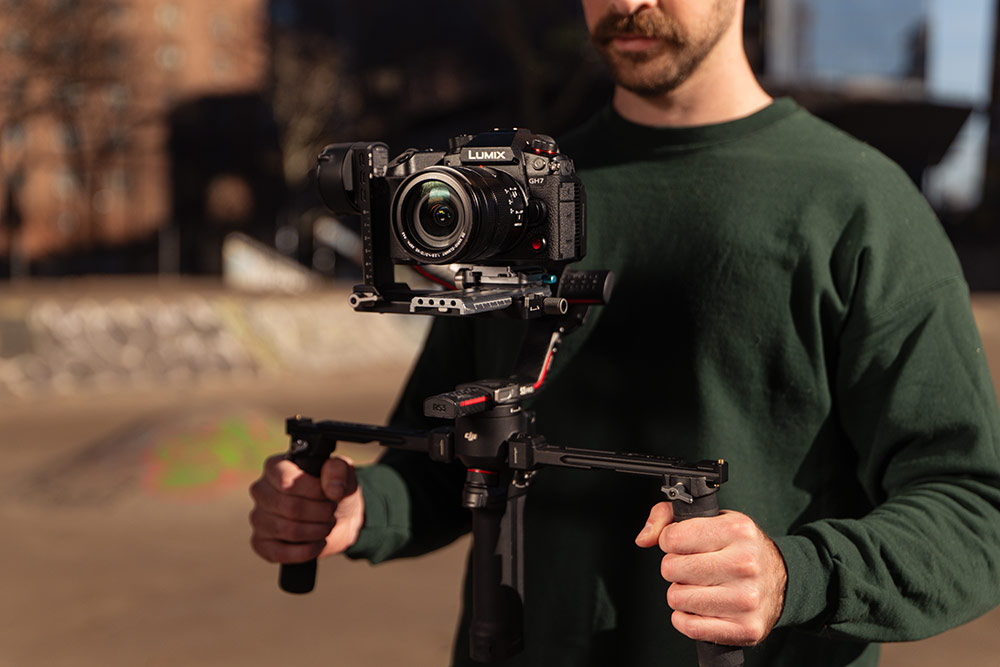
Panasonic GH6 Vs GH7 Specs Comparison
The table below compares key specifications between the Panasonic GH6 and GH7, highlighting the numerous upgrades and similarities between these two generations of cameras. This helps with understanding the advancements in the new model and how it builds on the strengths of its predecessor.
|
|
||
|
Sensor |
Live MOS sensor (17.3 x 13.0 mm) |
BSI CMOS sensor (17.3 x 13.0 mm) |
|
Dynamic range |
Dynamic Range Boost ON: 13+ stops (V-Log) |
Native 13+ stops (V-Log) |
|
Recorded pixels |
25.2 megapixels |
25.2 megapixels |
|
Lens mount |
||
|
AF system |
Contrast AF system |
Phase Detection AF system / Contrast AF system |
|
Subject detection AF |
Automatic Detection can be turned ON to switch between Human/ Face/Eye/ Animal+Human. Except when Pinpoint is set. |
Automatic Detection can be turned ON to switch between Human / Animal / Car / Motorcycle / Train / Airplane. Except when Pinpoint is set. |
|
32-bit float recording |
N/A |
Yes, via optional DMW-XLR2 microphone adapter, including 4ch Audio Recording with an XLR mic |
|
Proxy recording |
N/A |
Yes, via built-in frame.io support |
|
Recording file format |
MOV: H.264/MPEG-4 AVC, H.265/HEVC, Apple ProRes MP4: H.264/MPEG-4 AVC, H.265/HEVC |
MOV: H.264/MPEG-4 AVC, H.265/HEVC, Apple ProRes, Apple ProRes RAW MP4: H.264/MPEG-4 AVC, H.265/HEVC |
|
Recording to external SSD via USB |
Yes |
Yes |
|
Viewfinder |
OLED Live View Finder with Approx. 3.68 million dots |
OLED Live View Finder with Approx. 3.68 million dots |
|
Rear monitor |
Tilt free-angle, 3.0-inch (7.6cm), 3:2 aspect with Approx. 1.84 million dots |
Tilt free-angle, 3.0-inch (7.6cm), 3:2 aspect with Approx. 1.84 million dots |
|
Image stabilisation system |
B.I.S. (5-axis / 7.5-stop*) and Dual I.S. 2 (7.5-stop**) |
B.I.S. (5-axis / 7.5-stop*) and Dual I.S. 2 (7.5-stop**) |
|
Burst Shooting speed Mechanical shutter / Electronic front curtain shutter |
H: 14 frames/sec (AFS/MF), 8 frames/sec (AFC) (with Live View) M: 6 frames/sec (AFS/MF) (with Live View), 5 frames/sec (AFC) (with Live View) L: 2 frames/sec (AFS/MF/AFC) (with Live View) |
H: 14 frames/sec (AFS/MF), 10 frames/sec (AFC) (with Live View) M: 6 frames/sec (AFS/AFC/MF) (with Live View) L: 2 frames/sec (AFS/AFC/MF) (with Live View) |
|
Electronic shutter |
SH75: 75 frames/sec (AFS/MF) SH60: 60 frames/sec (AFS/MF) SH20: 20 frames/sec (AFS/MF) H: 14 frames/sec (AFS/MF), 7 frames/sec (AFC) (with Live View) M: 6 frames/sec (AFS/MF) (with Live View), 5 frames/sec (AFC) (with Live View) L: 2 frames/sec (AFS/MF/AFC) (with Live View) |
SH75: 75 frames/sec (AFS/MF) SH60: 60 frames/sec (AFS/AFC/MF) SH20: 20 frames/sec (AFS/AFC/MF) SH75 PRE: 75 frames/sec (AFS/MF) SH60 PRE: 60 frames/sec (AFS/AFC/MF) SH20 PRE: 20 frames/sec (AFS/AFC/MF) H: 14 frames/sec (AFS/MF), 9 frames/sec (AFC) (with Live View) M: 6 frames/sec (AFS/AFC/MF) (with Live View) L: 2 frames/sec (AFS/AFC/MF) (with Live View) |
|
No. of frames (Max.) |
RAW+JPEG: More than 40 images RAW: More than 65 images, More than 50 images JPEG: More than 95 images, More than 90 images |
RAW+JPEG: More than 170 images, More than 165 images
RAW: More than 215 images, More than 200 images
JPEG: More than 260 images, More than 250 images |
|
Real Time LUT |
N/A |
Yes |
|
Open Gate (full sensor) video |
Yes |
Yes |
|
Card slots |
Slot 1: CFexpress Card (CFexpress Type B) Slot 2: SD Memory Card / SDHC Memory Card* / SDXC Memory Card |
Slot 1: CFexpress Card (CFexpress Type B) Slot 2: SD Memory Card / SDHC Memory Card* / SDXC Memory Card |
|
Dust and Splash Resistant |
Yes |
Yes |
|
Battery |
||
|
Battery performance When using CFexpress Card |
Approx. 330 images, 750 images (Power Save LVF mode*) with H-ES12060 / DMW-BLK22 Approx. 350 images, 800 images (Power Save LVF mode*) with H-FS12060 / DMW-BLK22 |
Approx. 330 images, 750 images (Power Save LVF mode*) with H-ES12060 / DMW-BLK22 Approx. 350 images, 800 images (Power Save LVF mode*) with H-FS12060 / DMW-BLK22 |
|
Dimensions (W x H x D) |
Approx. 138.4 x 100.3 x 99.6 mm |
Approx. 138.4 x 100.3 x 99.6 mm |
|
Weight |
Approx. 823g (SD Memory Card x 1, Battery, Body) |
Approx. 805g (Body, Hot Shoe Cover, Battery, SD Memory Card x 1) |
It’s official, the GH7 provides significantly enhanced AF capabilities, even better video recording, in a slightly lighter body, with better electronic stabilisation (E.I.S.), enhanced buffer, internal RAW recording, and more. Let’s look at some of these features in more detail.
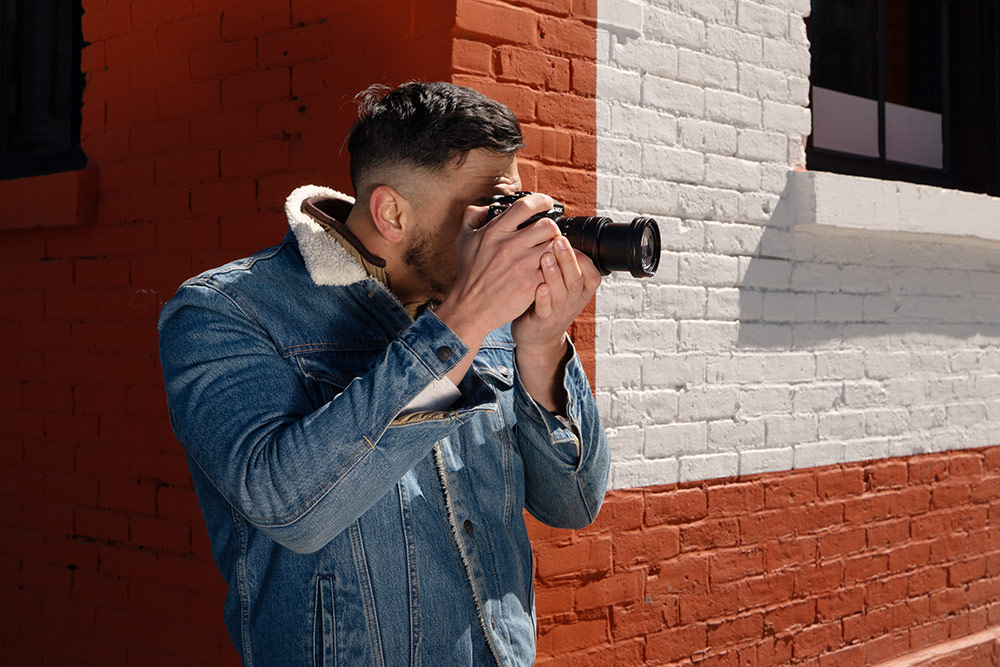
Autofocus Performance
Thanks to its new CMOS sensor and processor combination, the GH7 delivers vastly improved AF performance with PDAF (Phase Detection Auto-Focus). Gone are the days of relying on contrast-detect autofocus; adopting PDAF enables high-speed, high-precision AF, along with newly added real-time autofocus recognition AF for airplanes and trains.
Usability and Ergonomics
At 805g, the Lumix GH7 is a bigger and chunkier micro four thirds camera than typical, which fits well into a rig or stabiliser system. The rear flip LCD screen provides an advantage, offering flexible shooting angles without cable interference, while allowing for top-down filming and tricky angles.
A front record button enhances usability by providing easy access when the camera is rigged, ensuring it remains accessible even with a handle or cage attached. Additionally, front and rear tally lights are available, offering immediate indication for solo creators or client work when the camera is recording.
Of course, the body is dust and splash resistant, as well as freeze-proof to Panasonic’s customary -10ºC, which caters to most recording situations most of us come across regularly.
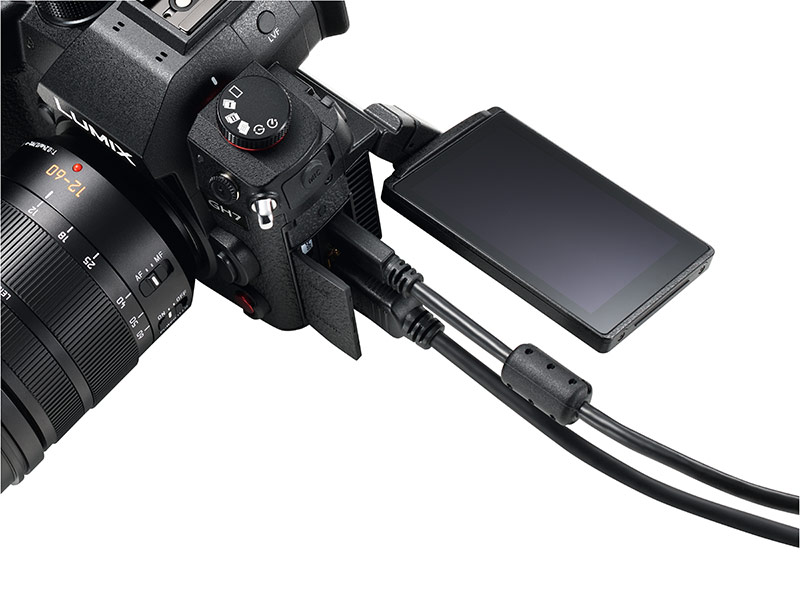
Stabilisation System
Stabilisation is an area where Lumix G Series cameras have always excelled, and the GH7 continues this trend through its combination of 5-axis in-body stabilisation and lens-based synchronised Dual I.S. 2, both of which offer up to 7.5 stops of compensation. Additionally, electronic stabilisation (E.I.S.) is improved.
E.I.S. now includes a High mode, which corrects perspective distortion as well as compensating for extreme camera shake, which may occur while running and recording, for example. This adds a new layer of I.S. to an already impressive system, regardless of whether using mechanical, dual synchronised, or electronic modes.
Video Formats and Resolutions
Panasonic has always ensured that the G series delivers class-leading video capabilities, with video quality that rivals many full-frame cameras. This is true of the GH7, which offers exceptional internal video and versatile external recording to a video recorder or SSD drives.
You can capture numerous different formats and resolutions, depending on the situation, right through to Open Gate 5.8K 30p, as well as internal recording of 5.7K 30p ProRes 422 HQ and ProRes RAW HQ.
Slow motion is available in 4:2:0 10-bit at 4K 120p, 4:2:2 in 10-bit Full HD at 240p, and 300fps in 10-bit Full HD using VFR recording. Shooting in V-Log results in 13+ stops of dynamic range, while capturing RAW to an external recorder enables up to 5.8K 5760x4320 (4:3) at 30p, 4.4K at 60p, or C4K at 120p – all in 12-bit colour depth (LPCM).
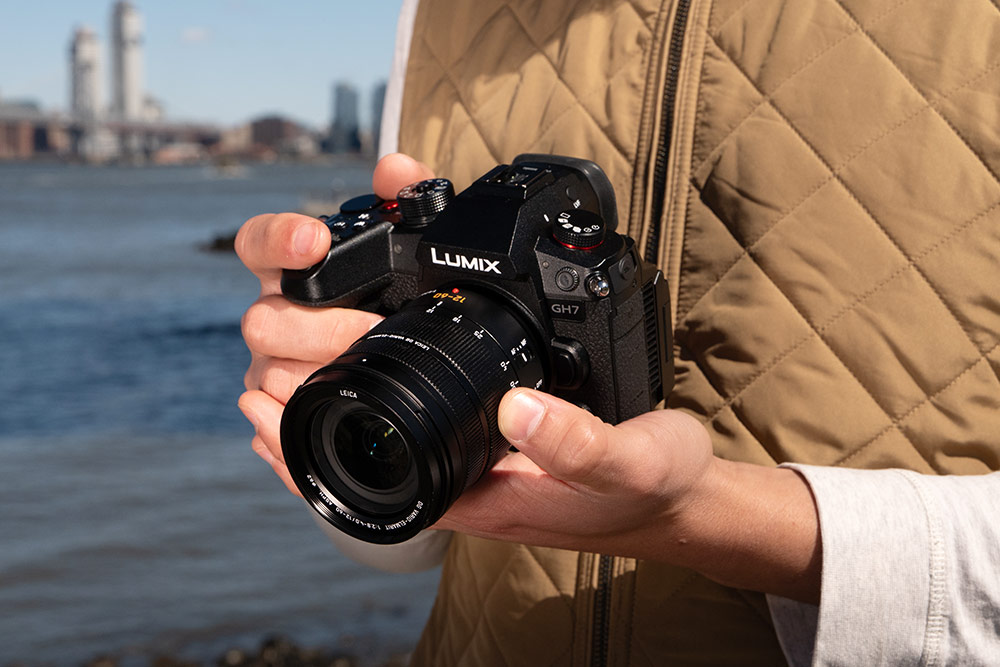
Connectivity
As a video-centric camera, the Lumix GH7 retains much of the previous model’s connectivity, such as the USB-C port, which charges while recording, full-sized HDMI Type A, φ3.5mm for an external microphone, and DMW-XLR2 connectivity for an XLR microphone with the all-new 32-bit float recording functionality.
There’s also a full-sized 3.5mm headphone output jack, CFexpress Card (CFexpress Type B), and SD Memory Card slot, plus a speaker, TC IN/OUT, tally lamps, Wi-Fi, Bluetooth, and just about everything you need for professional video recording, including video assist tools, which we look at more closely next.
Video Assist Tools
One of the key benefits of using the GH7’s powerful video recording capabilities is the number of useful video assist tools available. These include everything from a histogram and luminance spot meter to frame marker, zebra pattern, and LUT view assist, to the fan mode and focus transition features.
There’s a streaming blue frame indicator to go along with the red REC frame indicator, highlighting the new generation’s ability to stream out of the box. You can also customize the body in endless ways to streamline the camera to suit your workflow, which is ideal when shooting in various situations, studio sets, or solo.

32-bit Float Recording
One of the GH7’s headline features is the world’s first 32-bit float recording via the optional DMW-XLR2. This promises to reduce or entirely remove the need to adjust audio levels when capturing audio with an XLR microphone in noisy (or quiet) environments, by avoiding clipping at both ends.
This will undoubtedly offer real-world benefits to filmmakers who demand distortion-free audio while reducing editing requirements.
Compatible with New Lumix Lab App
The GH7 is compatible with the Lumix Lab App, which will provide conversion of Open Gate video, remote camera control, and much more, such as LUT creation, LUT transfer, and sharing.
Key features:
- Edit / Create Original LUTs
- Transfer Photos and Videos
- Download Creator LUTs/ Transfer LUTs to camera
- Social Media Sharing
Where some aspects of the app may still be in development, Panasonic recommends using the LUMIX Sync app, which enables remote shooting and shutter remote control.
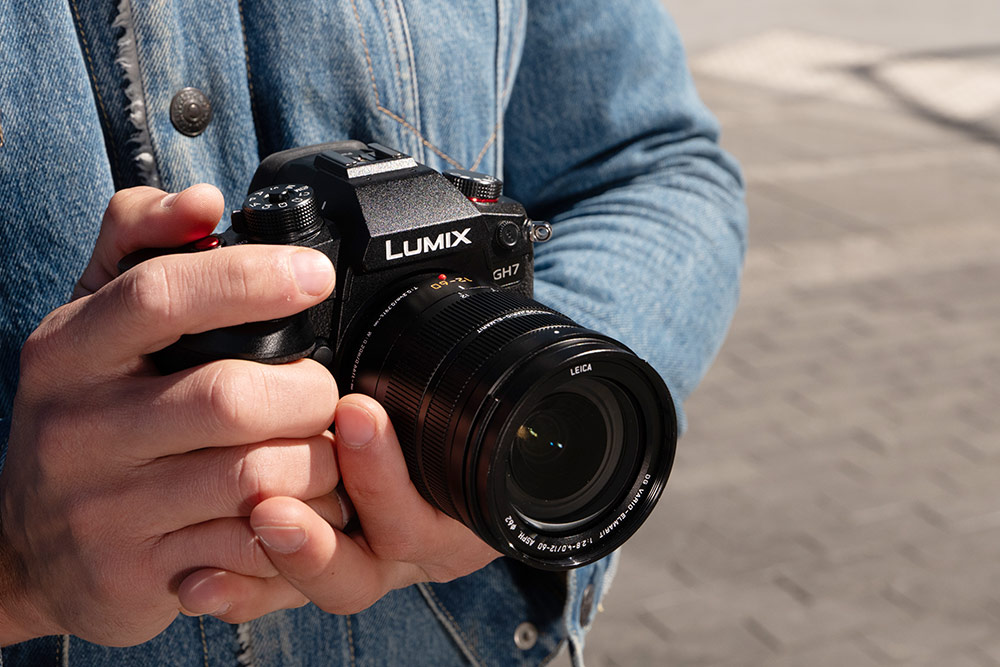
Is the GH7 Good for Photography?
A native stills ISO 100-12800 lends itself to capturing photos in diverse lighting conditions, and the GH7 offers plenty of tools for stills photography, including 10fps shooting in mechanical mode, with AFC engaged. A wide range of picture styles and LUTs are available, including LEICA Monochrome originally from the G9.
Photographers also gain plenty of computational features such as AE bracket, aperture bracket, focus bracket, and filters, along with flash compatibility for additional lighting requirements.
Panasonic licenses ARRI LogC3 from ARRI for the LUMIX GH7
Users can purchase a software license key DMW-SFU3A (available separately) from Panasonic and utilise a certified ARRI LogC3 curve, enabling seamless colour matching with ARRI's digital cinema cameras. This is ideal for multi-cam productions and colour matching across systems.
Lens Compatibility
With over 15 years of development, there are a huge variety of micro four thirds lenses within the ecosystem, catering to every style of content creation and subject matter. From compact primes to telephoto zooms, MFT offers a plethora of options for every budget.
Who is the Lumix GH7 For?
The Panasonic Lumix GH7 camera includes plenty of features for stills photography, although it is more squarely aimed at video creators. With live streaming support, internal Apple ProRes recording, SSD recording, and HDMI output, it is perfect for professional content creators with demanding needs and for client-based video work.
It is also suited to vloggers and solo creators, although the larger form factor may direct some users towards a smaller system.
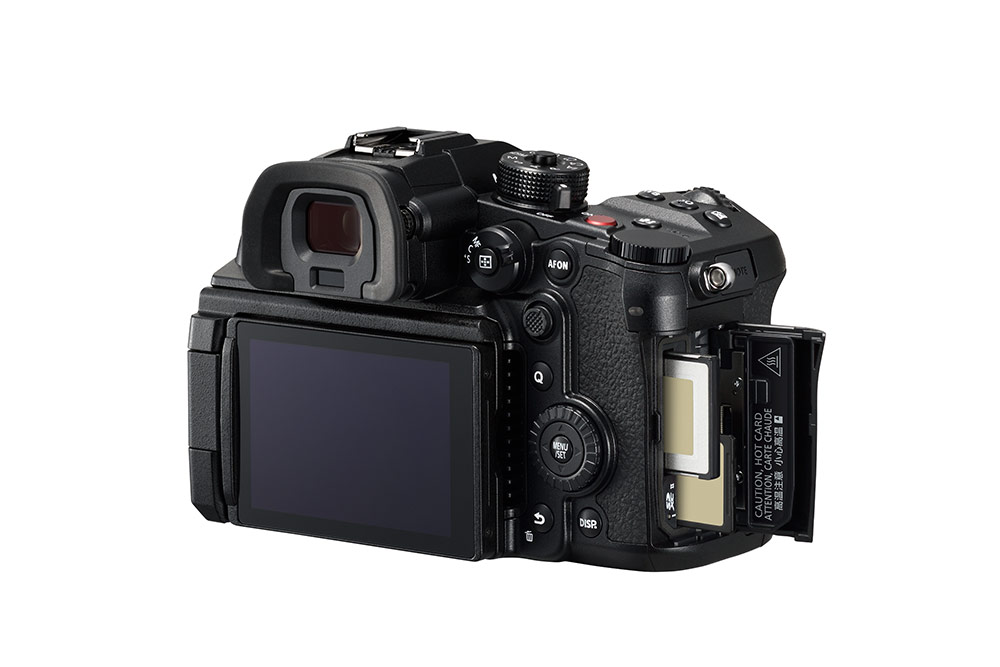
Conclusion
Panasonic has done a fantastic job with the Lumix GH7, updating virtually every aspect of an already excellent video-first camera. It provides enhanced phase detection AF with all of the accompanying benefits, 13+ stops dynamic range, and outstanding video performance from the newly developed 25.2MP BSI CMOS sensor.
Although it is a video-first hybrid camera, the GH7 meets the needs of creators, whatever their creative field may be. For any video project, the GH7 is able to deliver exceptionally sharp and clear video, smoothly stabilised and including Apple ProRes RAW internal recording.
If you’re a video creator, there’s no denying that this will be a very tempting upgrade, regardless of which previous model you shoot with. For stills photographers the G9 may be a more compelling choice, whereas those seeking full-frame will look to the S9, Lumix S5 II or any other S series Lumix camera.
Discover more about the Panasonic Lumix GH7 Digital Camera Body today, or choose the Lumix GH7 with Leica 12-60mm Lens Kit for a versatile setup from the get-go. Adding the DMW-XLR2 XLR Microphone Adapter allows for an XLR mic and 32-bit float recording, which takes all of the hassle out of adjusting levels in very noisy environments.
If you’re considering an upgrade why not take advantage of Park Camera’s trade-in program and discover how much you can save on the new GH7 after selling your old gear. It’s fast and completely hassle-free!
Share this post:
By Nick Dautlich on 05/06/2024

Trade in your old equipment
Fast and easy trade in service ensures your old gear is collected efficiently and you are paid quickly! It's very simple to trade in your unwanted photography gear. Just head over to our dedicated Sell or Part Exchange page, fill out the details, and we'll get back to you with an offer for your old gear. Take the cash, or put it towards the cost of your new gear. It's up to you! Find out more
sign up to the newsletter
Keep up to date on the latest photography news, events and offers. Sign up now
